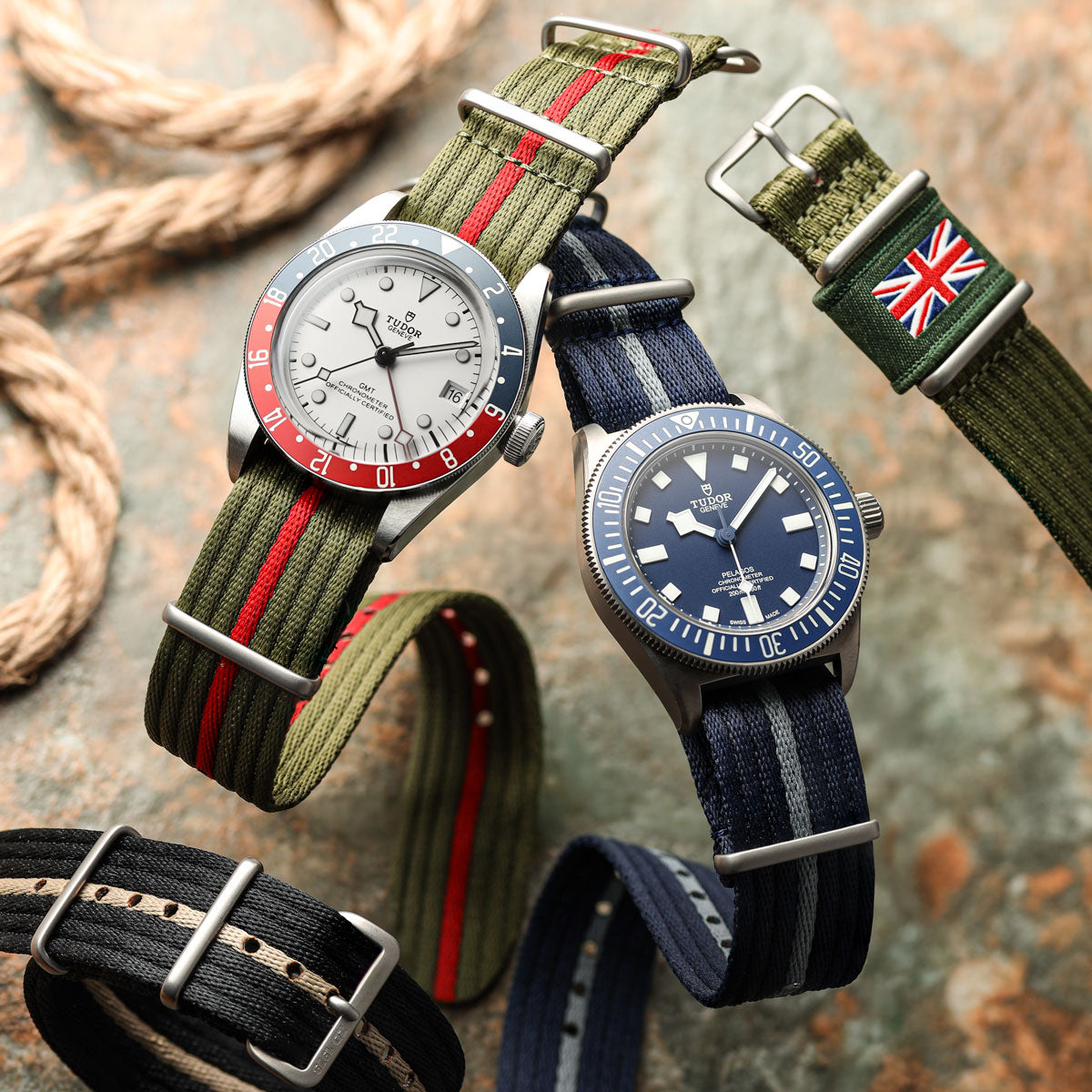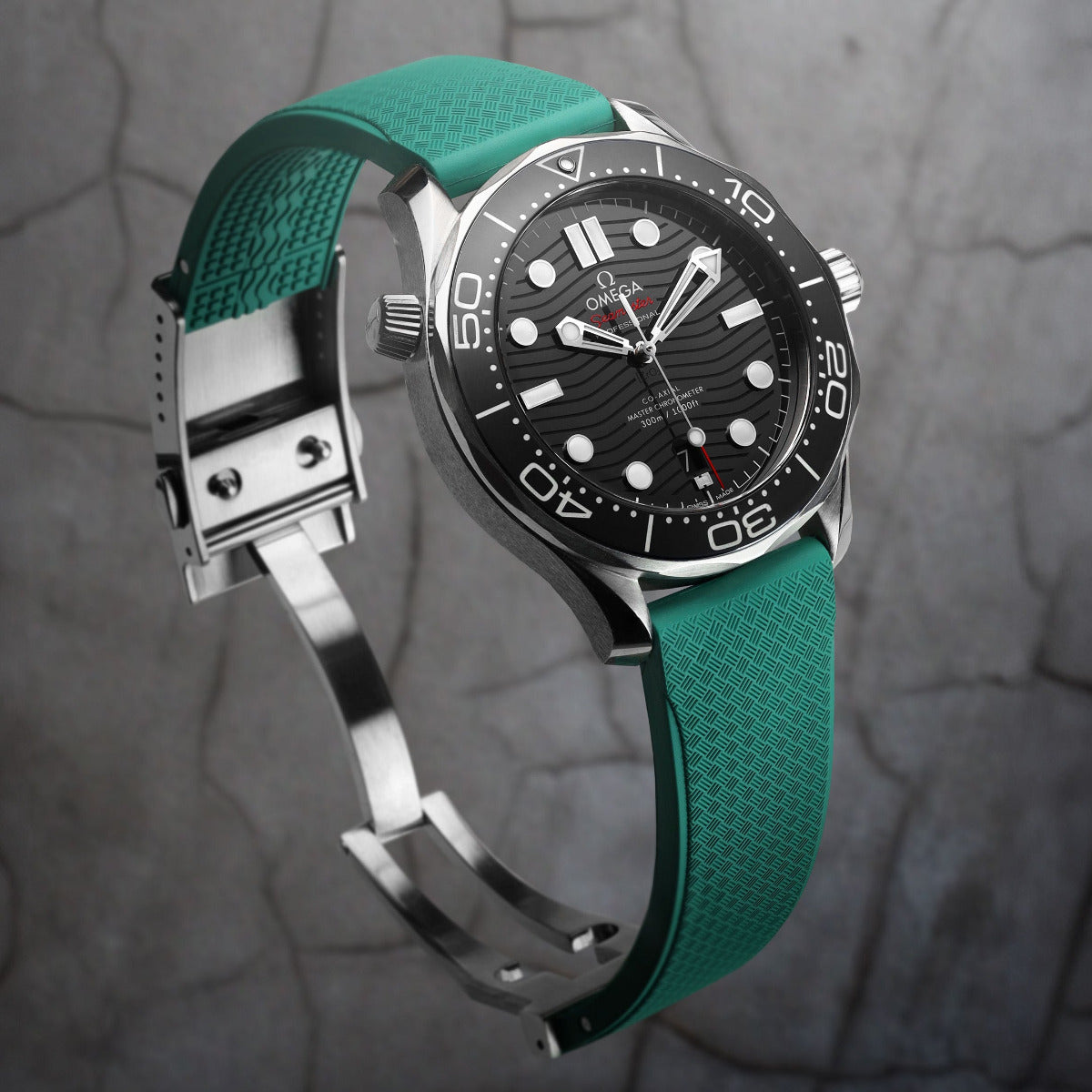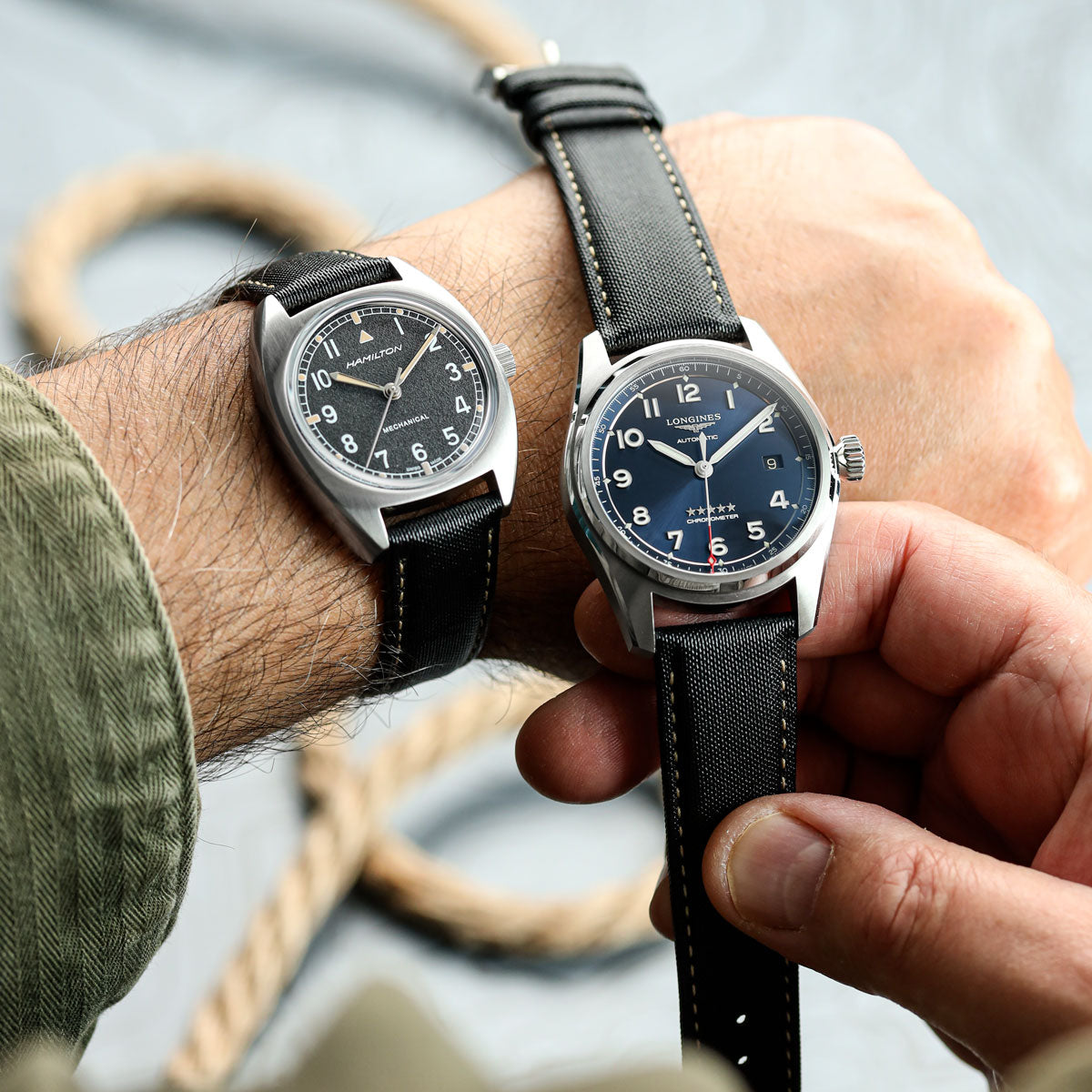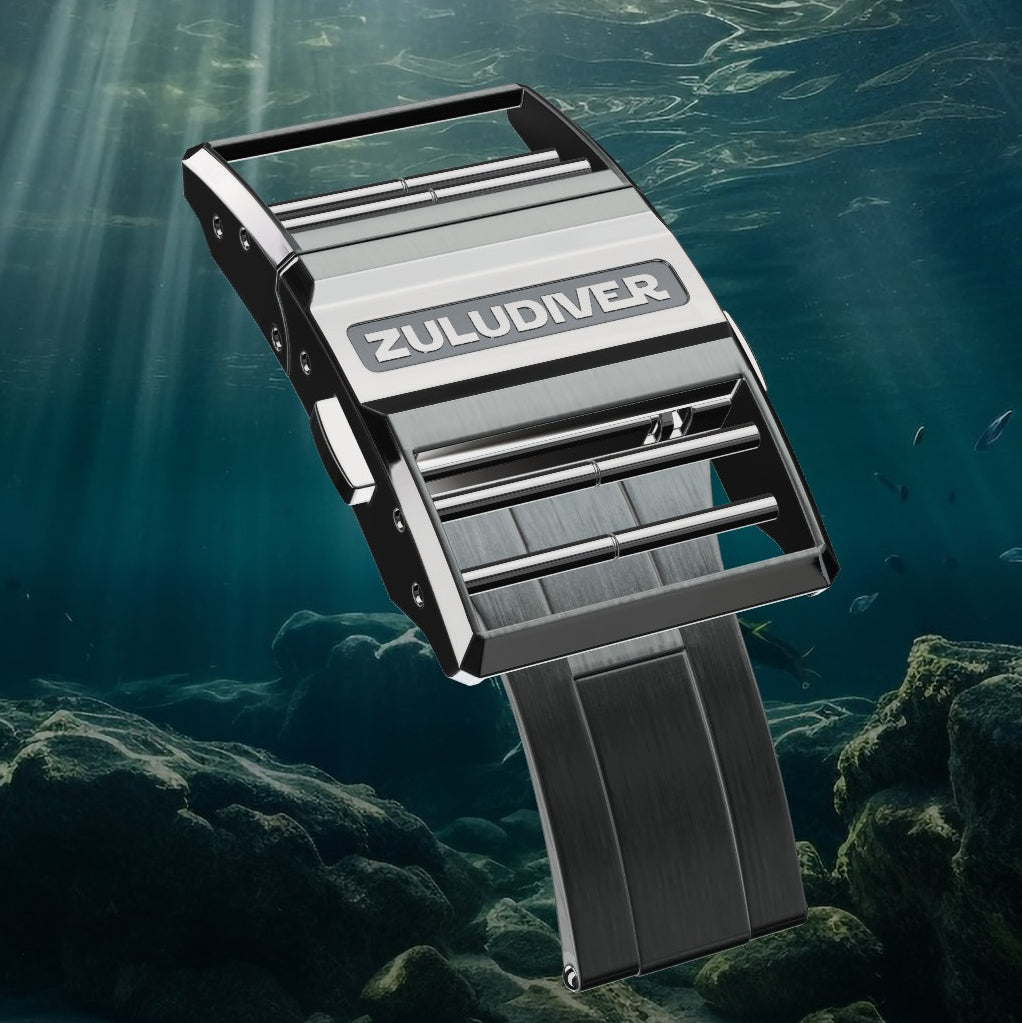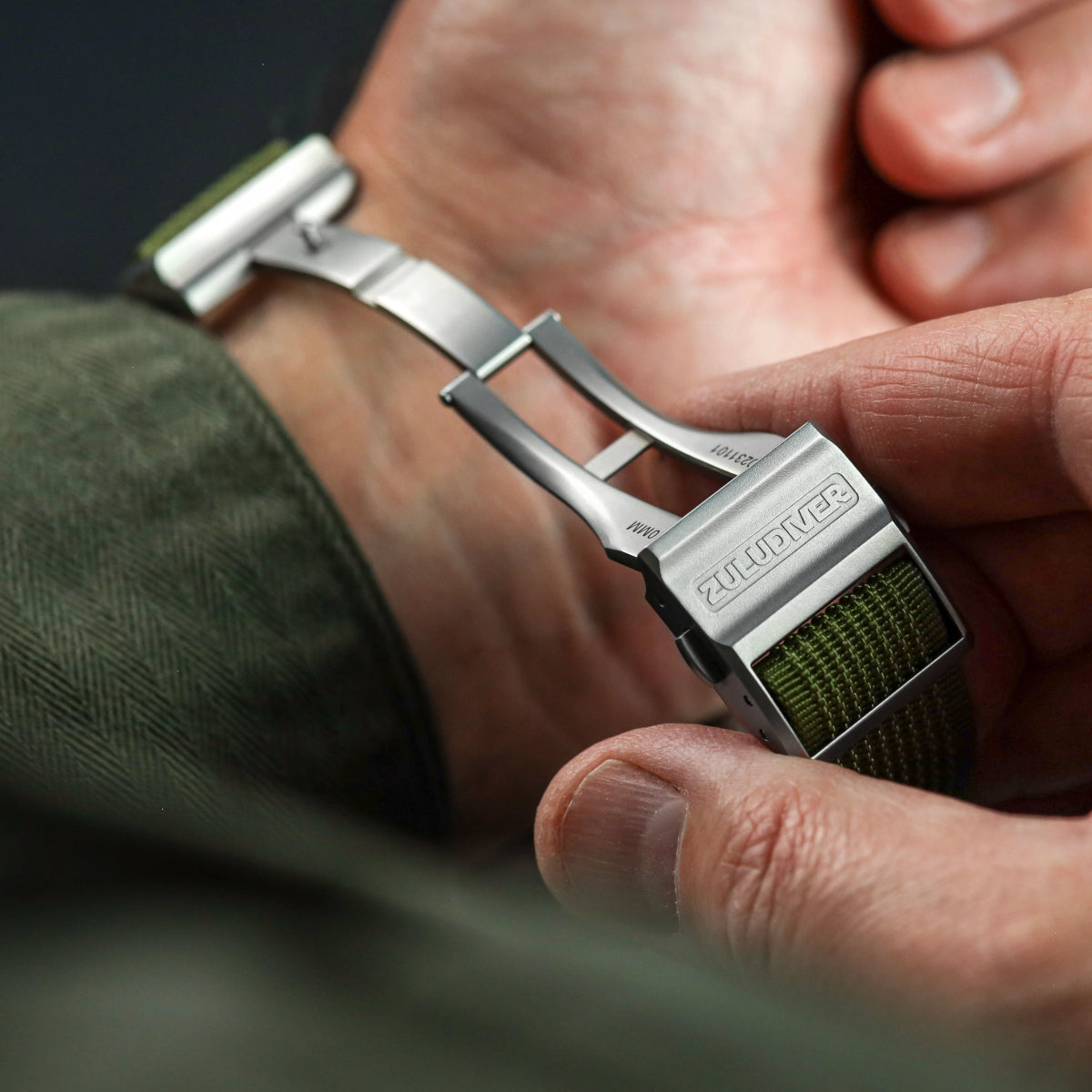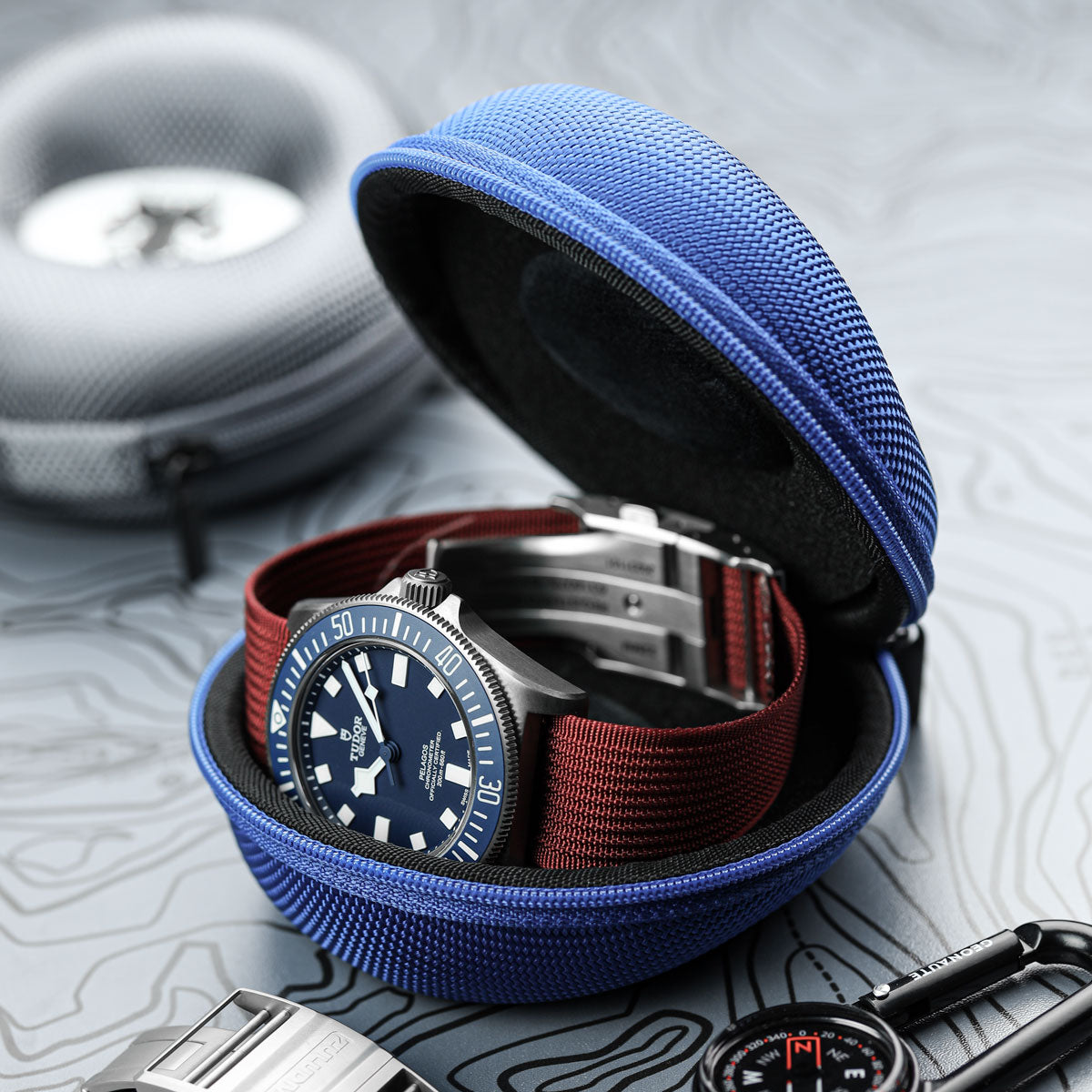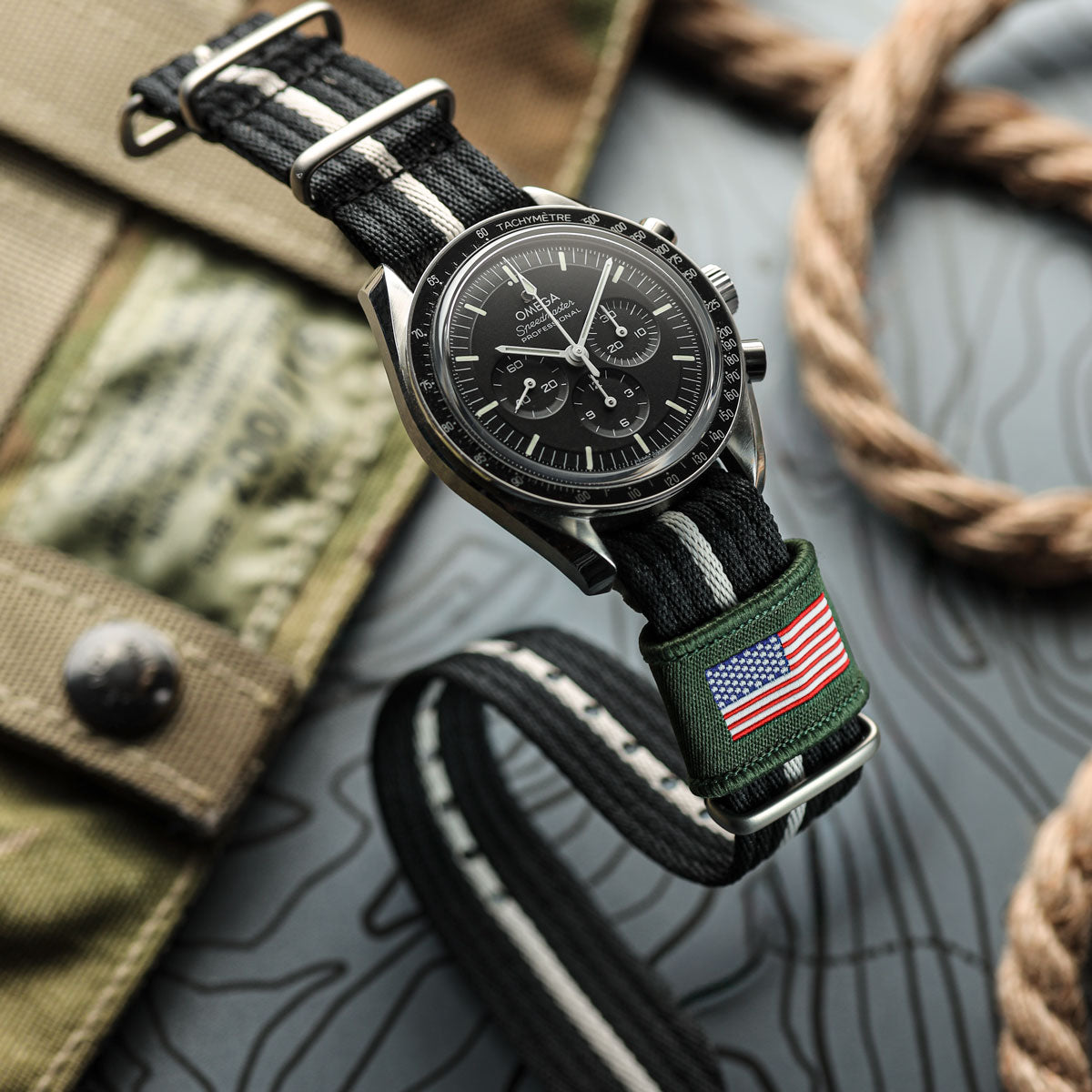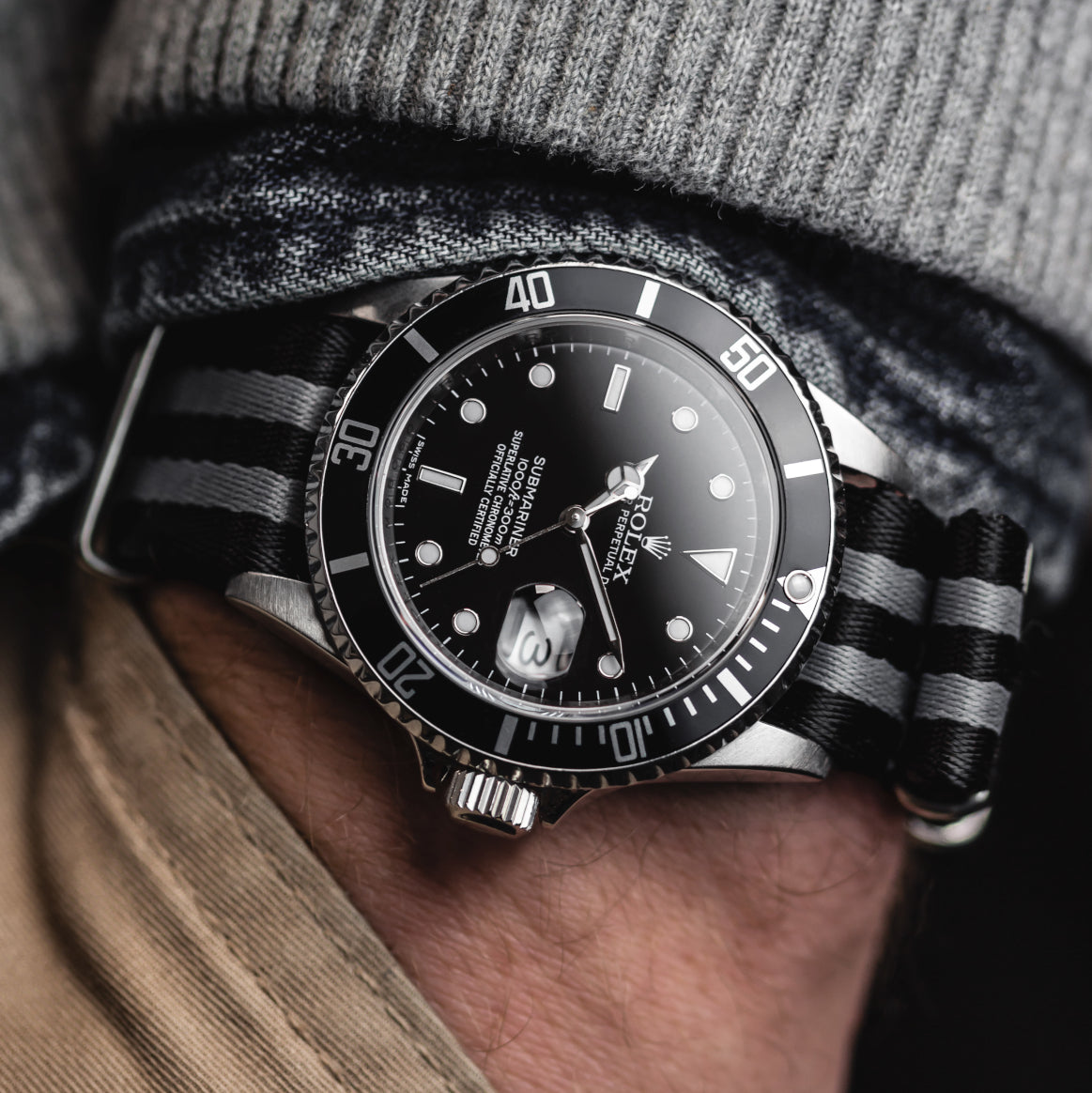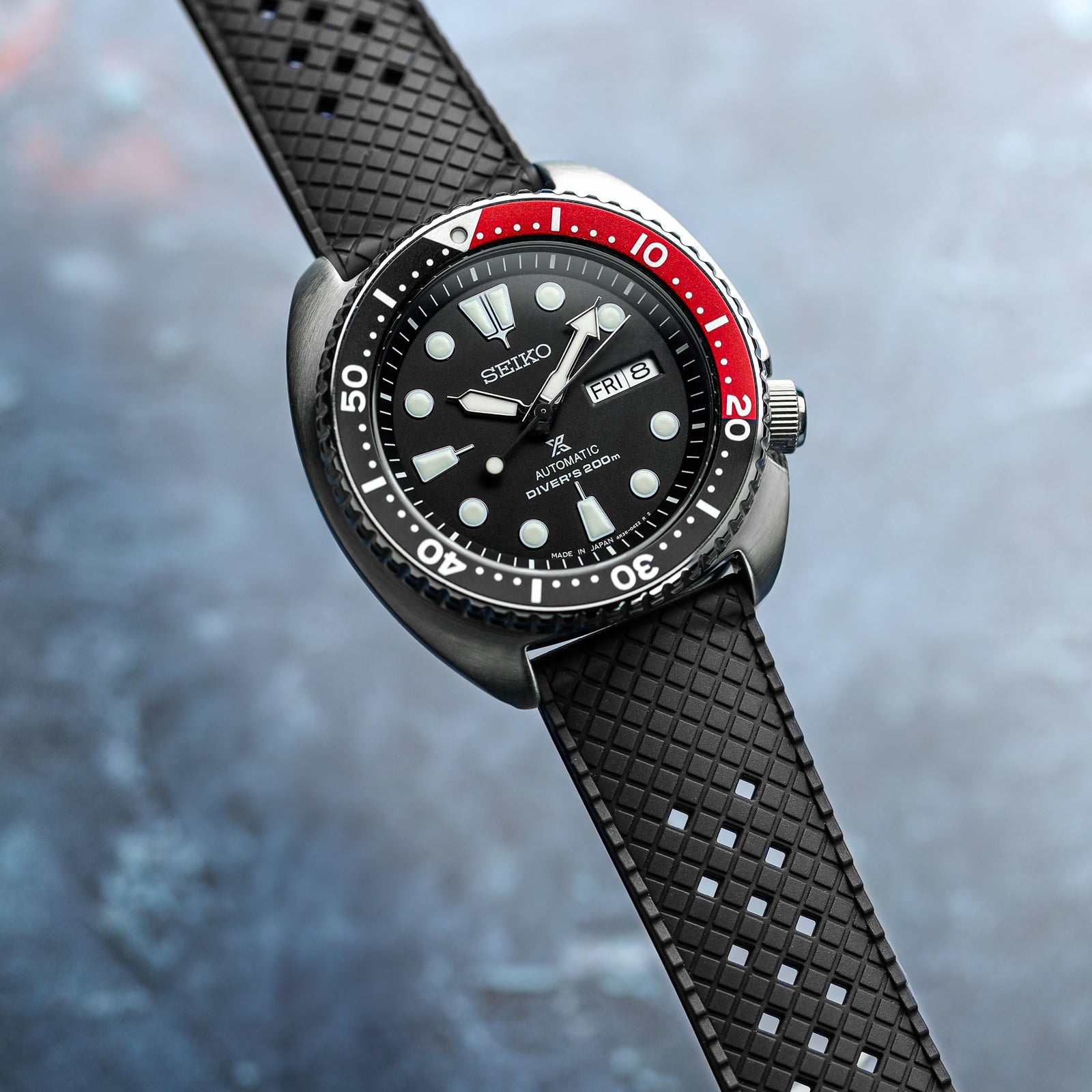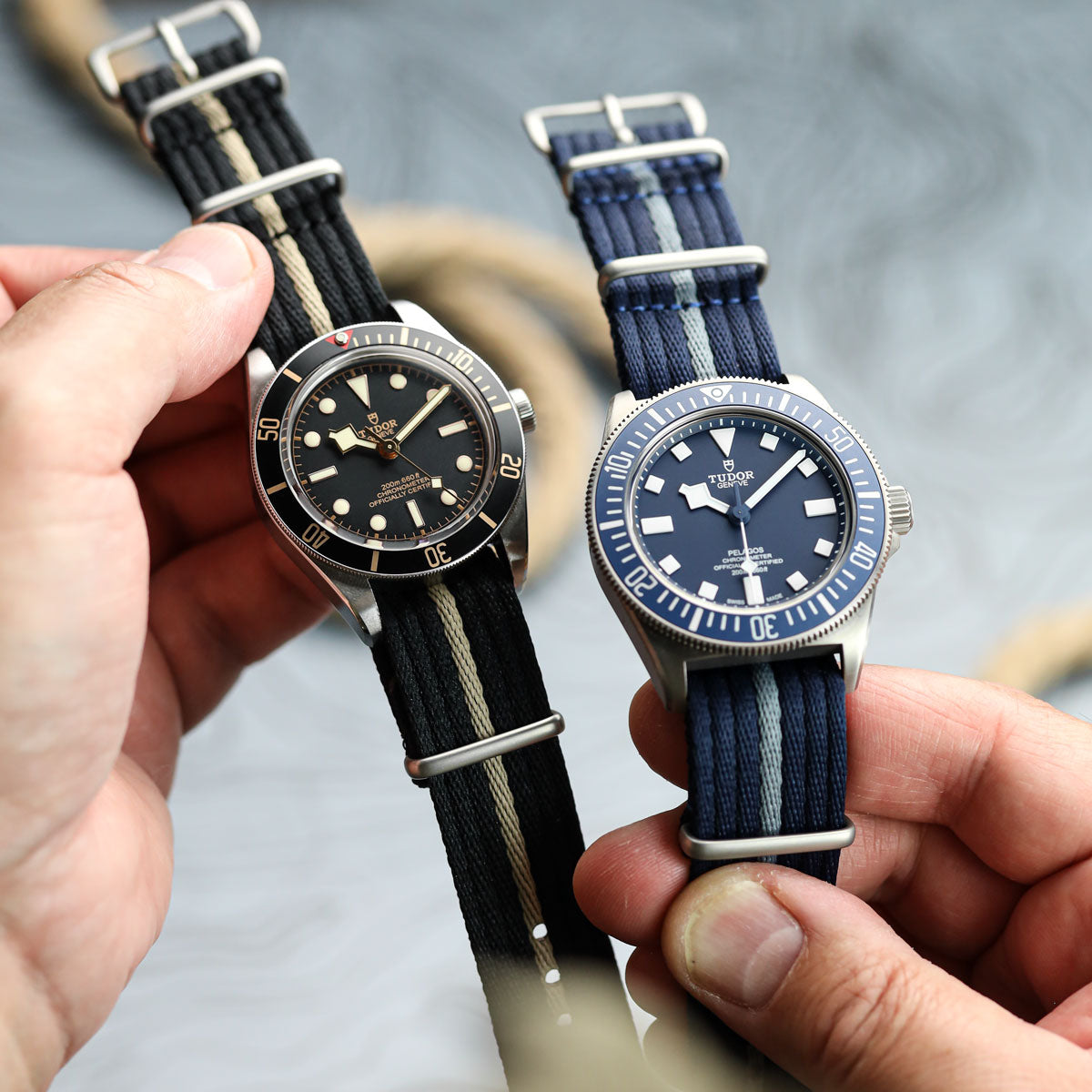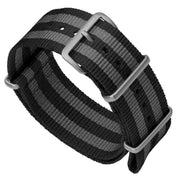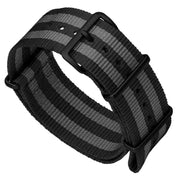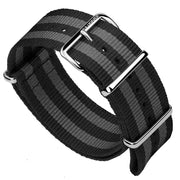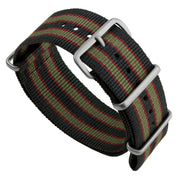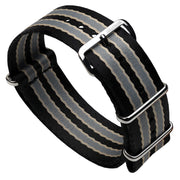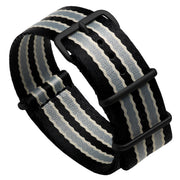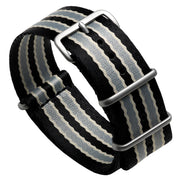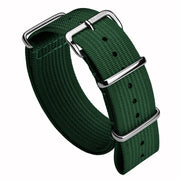Your Cart is Empty

1973 ZULUDIVER Military Nylon Straps

Categories
October 16, 2023
These straps need no introduction, especially if you are a regular ZULUDIVER follower. However, enthusiasts may not know that the classic look we all appreciate today began with a different design under the typically cryptic military designation of A.F.0210. This strap has fallen into watch legend, and it is understandably hard to find a good original, given the age and life the strap probably had.
 1973 British Military Watch Strap: HydraRib - Credit Zuludiver
1973 British Military Watch Strap: HydraRib - Credit Zuludiver
The A.F.0210. single pass canvas webbing strap first appeared around 1944 and is synonymous with the UK Dirty Dozen military watches. These classic timepieces were issued to British Forces in the latter years of World War 2, with examples of the watches being sought after and collectable. Some are rarer than others, to the extent that few of us have seen a complete collection of all twelve. Major brands such as Omega, IWC, and JLC, made military watches to strict criteria set by the British War Office. Specification RS/Prov/4373A "Watches, Wristlet, Waterproof" (WWW), which demanded hand-wound 35mm watches not dissimilar to the spec already seen in the A-11 watches used by WW2 US troops. The main difference was the Dirty Dozen had a low position sub-seconds dial as opposed to the A-11's full-size seconds hand. Most of the British watches were issued on the A.F.0210. strap.
However, this WW2 strap was some distance in development from the Military Nylon "Classic Bond" style we know today. This creation did not appear until 1973, courtesy of the UK Military. Bring on the second evolution.
The War Office had been replaced with the more politically correct Ministry of Defence when they laid down Defence Standard 66-15 specifying a watch with chrome plated metalwork, capable of resisting water and dirt, fitted to a grey nylon strap which could provide comfort in all temperatures. The original 70s straps were 20mm, although the current issue models additionally come in 18mm to match watches in modern service. Colloquially, the straps are often called "G10s" (pronounced G-Ten). This nickname derives from the MoD Form G1098, which was required to requisition a new strap. True story: an old Foreign Office Station Chief who was ex-45 Commando and my mentor called the Military Nylon strap on his Omega Speedmaster Moonwatch a "G-Ten" till his last day.
 1973 British Military Watch Strap: SPACE-BOUND - Credit Zuludiver
1973 British Military Watch Strap: SPACE-BOUND - Credit Zuludiver
So, how do you wear and adjust a 1973 strap?
These straps are supremely comfortable and support watches of any weight and size. If you are new to this world, the straps may seem cumbersome and lengthy, but once you get used to them, they become intuitive and soon become a default go-to.
Let's explore how you fit a 1973 to a watch, which involves a bit of experimentation to find the sweet spot for on the strap. To ensure we are 100% clear, let's clarify the few parts comprising a good Military Nylon. The strap is constructed with a long upper strap and short lower strap, a single buckle and three keepers: one at the buckle, one above the watch (strap middle) and one below.
We will refer to each of those. One keeper may move for perfect adjustment if you have a high-end strap.
To attach a 1973, remove the existing strap or bracelet and then fit the spring bars back into their lug holes. Good quality spring bars are essential for 1973s, so do not compromise on this critical element. Superior strength spring bars are available from ZULUDIVER for just £2.95 a set.
 1973 British Military Watch Strap: CADET Bond - Credit Zuludiver
1973 British Military Watch Strap: CADET Bond - Credit Zuludiver
- A new strap will probably arrive with the long upper part fed through the third (lowest) keeper.
- First, remove this from the keeper so the long end is hanging loose.
- Then, feed the free round end of the upper strap DOWN through the gap between the upper spring bar and the watch case at the upper lugs.
- Then pass the strap across the case back of the watch, then UP through the gap between the lower spring bar and the lower lugs.
- Slide the watch up the strap till it is nearly at the middle keeper, then feed the long end of the 1973 back through the 3rd keeper of the strap.
- If you've done this correctly, the watch should be trapped between the lower and middle keeper on the strap with the lower and upper straps under the watch case back and the lower (shorter half) strap pressed against your wrist. The watch should now be captive no matter how you move the strap around.
I have quite a large wrist so I prefer the watch to sit close to the lowest keeper. When the strap curls around my wrist, this position naturally forces the keepers into an aesthetically pleasing symmetry and, more importantly, places the buckle slightly off-centre so it is not touching the table or keyboard when I am writing. This is where you will need to experiment a little to find what suits you best. Once you are happy with the watch position, fasten the buckle traditionally.
Now you are left with the one element of a 1973 which throws people new to the genre. The remaining long length of the top strap swings free and loose!
 1973 British Military Watch Strap: SPACE-BOUND - Credit WatchGecko
1973 British Military Watch Strap: SPACE-BOUND - Credit WatchGecko
The Long End...
Why are 1973 straps so long? A question we hear countless times. Historically, the long length and multiple pin holes allowed soldiers to wear the strap over clothing. Whether climbing Kilimanjaro, deep sea diving or on Special Operations, the ability to wear your watch over outer clothing or a wetsuit is one of the principal benefits of the 1973 strap.
To secure the loose end, you must tuck the strap back in on itself. This is one of the easier elements of a 1973 but it often foxes people. Take the material's long end, bend it towards your wrist, and feed it back down through the middle and upper keepers behind itself. Alternatively, if it is easier, you can bend the strap away from your wrist and pass the loose end back through the two keepers above itself, but the negative to this method is you still have a flexible centimetre of material that can catch. There is no right or wrong way. Some are better than others.
ZULUDIVER 1973 Military Nylon straps are a relatively inexpensive way to change a watch's appearance and add a hugely practical element to everyday use. Arguably more relevant, although I haven't touched on it, is that these straps are fashionable. Hence, significant brands like Omega and Breitling make military nylon straps and sell them at considerable expense.
At ZULUDIVER, we have a vast portfolio of 1973 straps for you to choose from and here are some of my personal favourites, which I have found suit almost any watch.
 1973 British Military Watch Strap: ARMOURED RECON - Credit Zuludiver
1973 British Military Watch Strap: ARMOURED RECON - Credit Zuludiver
1973 British Military Watch Strap: ARMOURED RECON - Admiralty Grey, Satin
Retain the first issue grey straps' original look in a more contemporary package. Our Armoured Recon collection is made from high-strength seatbelt nylon webbing and fitted with premium-grade stainless steel hardware, which includes the ZULUDIVER etching on the buckle and the keeper at 6 o'clock. The nylon we have used is silky smooth, providing a softer feel, and its reflective iridescent quality means the colours seem to change when seen from different angles.
This is a premium watch strap, measuring 300mm, and measures 1.2mm in thickness.
1973 British Military Watch Strap: CADET Bond - Classic, Satin
I confess I have a few of these because I like to fit them to multiple watches. Pound for pound, this classic is probably one of the best 1973 straps available.
With the latest iteration of the Classic Bond, you can choose from a glossy polished finish, a sleek satin finish, or a bold IP Black hardware option to fit your mission requirements. All models retain the trademark double stripe. The 1.2mm thick woven nylon fabric is tough, durable and quick-drying, making it the perfect choice for an active lifestyle and water activities or just someone wanting to channel their inner agent. With its historic 1973 British Military design, this timeless strap will never go out of style.
1973 British Military Watch Strap: HydraRib – ATLAS
 1973 British Military Watch Strap: HydraRib - Credit Zuludiver
1973 British Military Watch Strap: HydraRib - Credit Zuludiver
The ZULUDIVER HydraRib model uses a core-spun method, constructed from premium high-quality 100% polyamide yarn. The durability of these straps has been tested and certified to BS EN 14362. The straps have a three-dimensional, multi-strand appearance, and this inspired the name HydraRib, after the multi-headed creature from Greek mythology - the Hydra. A serpent with several heads that seemed to be indestructible until slain by Hercules – a fitting name for one of our toughest straps yet.
The webbing is dyed and colour-fixed at high temperatures to ensure the colour does not fade or lint after extended use. The result is a material stronger than other nylons, as well as waterproof and washable.
1973 British Military Watch Strap: SPACE-BOUND – Neptune
 1973 British Military Watch Strap: SPACE-BOUND - Credit Zuludiver
1973 British Military Watch Strap: SPACE-BOUND - Credit Zuludiver
This is a 1973 with a twist, inspired not by the military but by the space race. Part of the ZULUDIVER Space-Bound collection these 1973 straps were designed specifically to fit steel or bio-ceramic moon watches which commemorate our exploration of the stars.
Crafted from premium materials, each watch strap exudes a timeless elegance while honouring this historic event with its distinctive and artistic designs. They are designed to be both durable and stylish, making them a great choice for anyone looking to add a touch of nostalgia to their watch collection. The collection is a limited edition release and is likely to be highly sought after by watch enthusiasts and collectors.

About the Author: Richard Brown
About the Author: Richard Brown
I truly believe one of the best partners in exploration and adventure is a fine watch. Over 30 years of collecting, my fascination with the technical capabilities of both vintage and modern timepieces has never abated and it is a privilege to be able to share this passion through writing.
More Articles by Richard Brown

